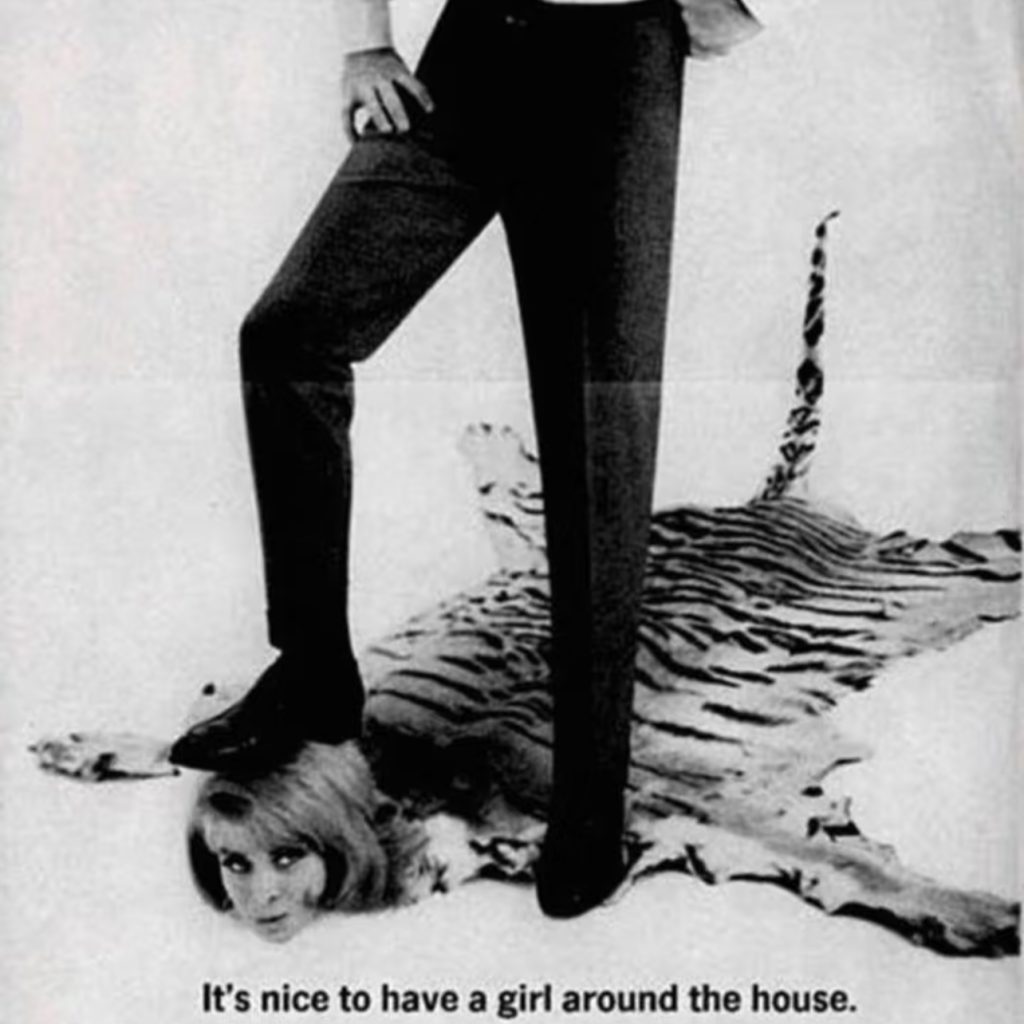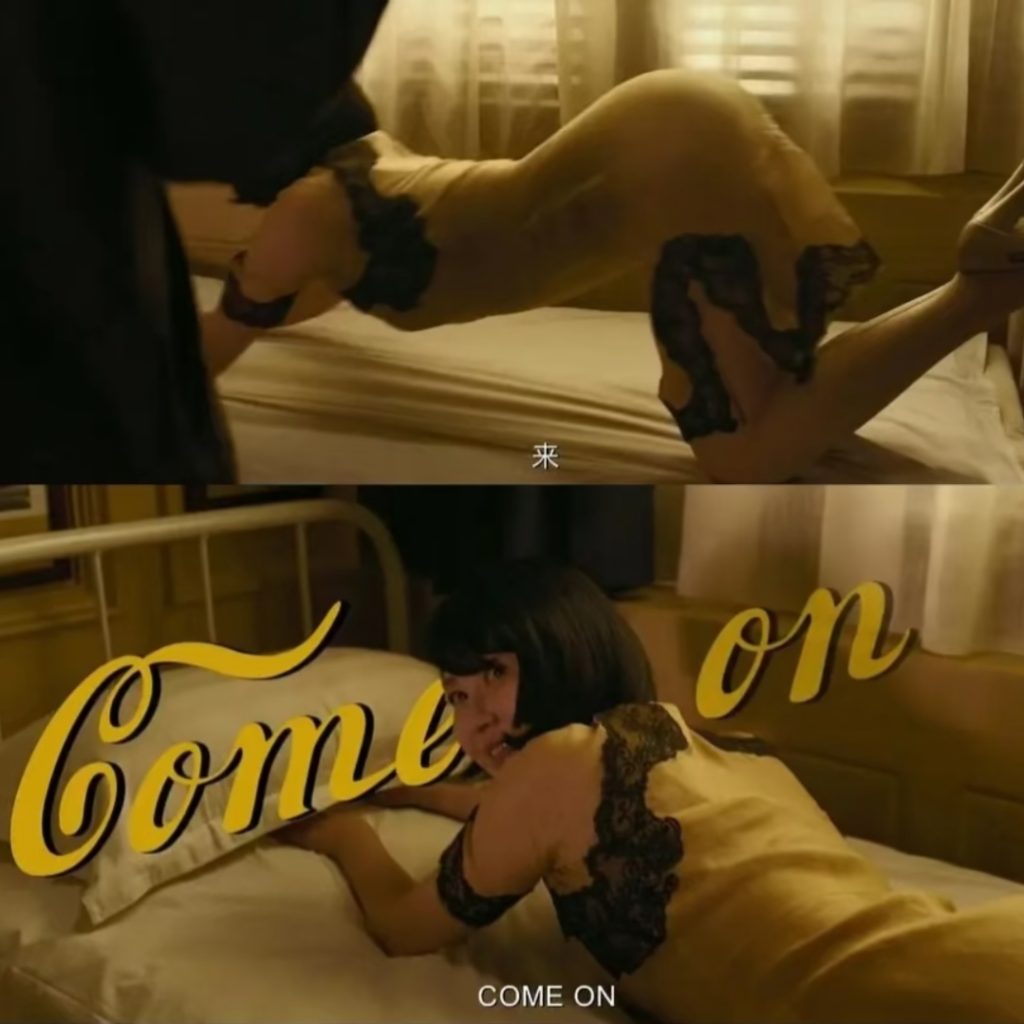In this age of visual supremacy, we are surrounded by all kinds of “gazes” every day. Among them, “Male Gaze” and “Body Banquet” are two particularly interesting concepts, which not only reveal the subtle relationship of gender power, but also provide us with a unique perspective on social and cultural phenomena. They not only reveal the subtle relationship between gender power, but also provide us with a unique perspective on a social and cultural phenomenon.


First proposed by British feminist scholar Laura Mulvey in 1975, the term “Male Gaze” refers to the fact that in various visual media, such as movies, advertisements, and social media, women are often placed in the position of being watched, while men play the role of viewers. This type of viewing not only reinforces gender inequality, but also shapes women’s social image and self-perception.

In movies and television, the heroine strikes a “sexy” pose to seduce the hero.

In advertisements, women are often shown as sexy and passive to attract the attention of male consumers.

On social media, the images and statements of female users are often commented on and evaluated by male users.
This mode of interaction further reinforces “Male Gaze”, whereby women are forced to dress up in front of the camera in order to appeal to male aesthetic standards.
The “Body Banquet” refers to certain social occasions or events where women’s bodies are treated as a consumer product for men to admire and enjoy. This phenomenon is common in nightclubs, parties, and even certain commercial activities.

In nightclubs, women are often asked to dress revealingly to attract male customers.

At commercial events, female models or performers are put on physical display to attract the attention of male customers.

On social media, female users display their bodies to gain attention and likes, in response to the “Body Banquet” culture.
Although different in expression, both “Male Gaze” and “Body Banquet” reflect the imbalance of gender power relations. In this game, women’s bodies and images are dominated and consumed by men, which not only restricts women’s freedom and development, but also exacerbates gender discrimination and inequality. The long-standing culture of “Male Gaze” and “Body Banquet” can lead women to develop unhealthy perceptions of their own bodies, such as over-pursuing physical appearance and body image, and neglecting inner values and personal development. In these cultural environments, women may feel stress and anxiety, and may even develop low self-esteem and self-doubt, which can have a negative impact on their mental health.
So, how to break this game?
First of all, women should enhance their self-awareness and realize that their value does not only lie in their external appearance and body shape, but more importantly in their inner qualities and abilities. Don’t lose yourself because of external evaluations, and be the truest version of yourself.
Secondly, women are encouraged to express their true thoughts and feelings in various occasions and refuse to be objectified and marginalized. If you feel uncomfortable on a certain occasion, speak up and don’t be afraid to express your opinion.
Of course, the “lack of progress” in women’s thinking is actually the “lack of progress” in society.
Schools and families should strengthen education on gender equality and cultivate young people’s gender sensitivity and respect for multiculturalism.
The government and enterprises should introduce relevant policies to protect women’s rights and interests and combat gender discrimination and inequality.
The media should take up its social responsibility to report and display more women’s diverse images and achievements, and avoid overemphasizing physical appearance and body shape.
The “Male Gaze” and “Body Banquet” are complex social and cultural phenomena, and it is not enough to rely solely on women themselves to change them.
Reference
•Mulvey, L. (1975) ‘Visual pleasure and narrative cinema’, Screen, 16(3), pp. 6-18.
•中国青年网(2017)太原“人体宴”性骚扰打人事件商家承认全程策划炒作网友呼吁惩戒[Online]. Available at: http://www.youth.cn/2017-06/06/content 11000000.htm (Accessed: 11 December 2024).
•Doe, J. (2015) ‘The male gaze in advertising: A critical analysis’, Journal of Consumer Culture, 15(1), pp. 3-22.
•Johnson, E. (2018) ‘Gender equality education: A review of the literature’, Gender and Education, 30(6), pp. 721-740.


I was immediately attract by ideas of “Male Gaze” and “Body Banquet”. I was totally amazed by your work after reading it. What really impressed me is how you ties into the pressures women face right now. Women are constantly judged on how we look, not what we say or do, and it’s so exhausting. Even those “body positivity” movements on social media sometimes feel like they’re just repackaging the same beauty standards in a “woke” way. I mean,why is the focus still on how our bodies look instead of what we can actually contribute?
And I really liked how you pointed out that this isn’t just a women’s issue. Everyone needs to step up.
Finally,your blog is really amazing. Great work.
The male gaze based on the perspective of the female body provides a unique insight into how I view gender power relations in society. Especially in a society where men are unequal to women, you are the one who embodies women not only at the level of film and social media, but also further shapes women’s social image through different social activities. The relationship of unequal gender rights embodied in the body banquet that you propose reflects feminism to a certain extent. The emotions generated by the male perspective on women’s mental health further inspire women to pursue gender equality in society. It is worth noting that your article based on the male perspective further suggests how women can break the dilemma of gender inequality in society.
As mentioned in your article, women attract the attention of their male clients by dressing sexily in business, especially on social media, where women satisfy the male gaze by displaying their body parts as a way to gain relevant traffic. These body feasts and male perspectives are both largely reflective of male dominance in social power inequalities.
Your article further raises the issue of the objectification of women through the male gaze, especially women’s feminist expression in the male gaze. Your essay further demonstrates the problem of gender inequality through the male gaze, especially at the end of the essay when you express a series of suggestions on how women can break through gender inequality to provide a basis for feminist expression.
All in all, your analysis of the male gaze and the expression of the female body feast provided me with a unique perspective on my understanding of gender rights, thank you very much for your article!